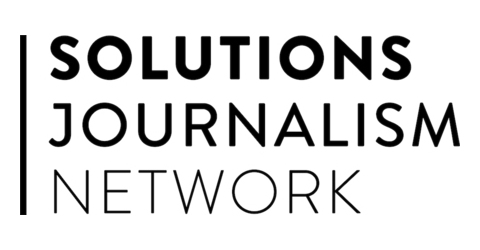Editor’s note: This article was produced through a partnership between South Dakota News Watch and the Solutions Journalism Network, a national non-profit group that supports rigorous journalism about responses to problems.
The Cheyenne River Sioux Tribe in north-central South Dakota has received extensive state and national press coverage in recent days after Gov. Kristi Noem threatened legal action if the tribe did not dismantle highway checkpoints it is using to manage traffic flow amid the COVID-19 pandemic.
The stalemate between the governor and the Cheyenne River and Oglala Lakota Sioux tribes remains, with checkpoints on state and federal highways still in place and Noem seeking but not yet finding a resolution to the conflict.
The controversy over the checkpoints has obscured the extensive and thus far highly successful effort of the Cheyenne River Sioux Tribe to prevent the deadly virus from infecting its roughly 12,000 residents, many who are poor or at high risk of complications or death from COVID-19.
As of May 19, the virus had infected nearly 4,100 people in South Dakota, including, according to tribal leaders, about 260 Native Americans.
But the sprawling Cheyenne River Indian Reservation has seen only one COVID-19 case in a woman who has since recovered. The tribe’s efforts to prevent the spread come as other American Indian tribes have suffered high numbers of cases, including the Navajo Nation in the southwestern U.S., where the rate of infection per 1,000 residents is now higher than in New York.
The Cheyenne River tribe did not wait to take action once the potential for health issues from the pandemic became clear, said Lynn Provost, CEO of Tribal Health Services on the reservation. Provost said the tribe enacted its own safety measures several days before President Trump declared a national emergency in mid-March.
“Our tribal administrators got on this problem right away; they really jumped on it,” Provost said. “Our infectious-control nurses have done an awesome job since then.”
The tribe has instituted a mandatory nightly curfew, placed strict limitations on how people shop, distributed free safety equipment, hired more police officers, expanded hospital capacity, created food-sharing and storage programs and instituted an effort in which at-risk tribal elders are contacted every day for welfare checks by phone.
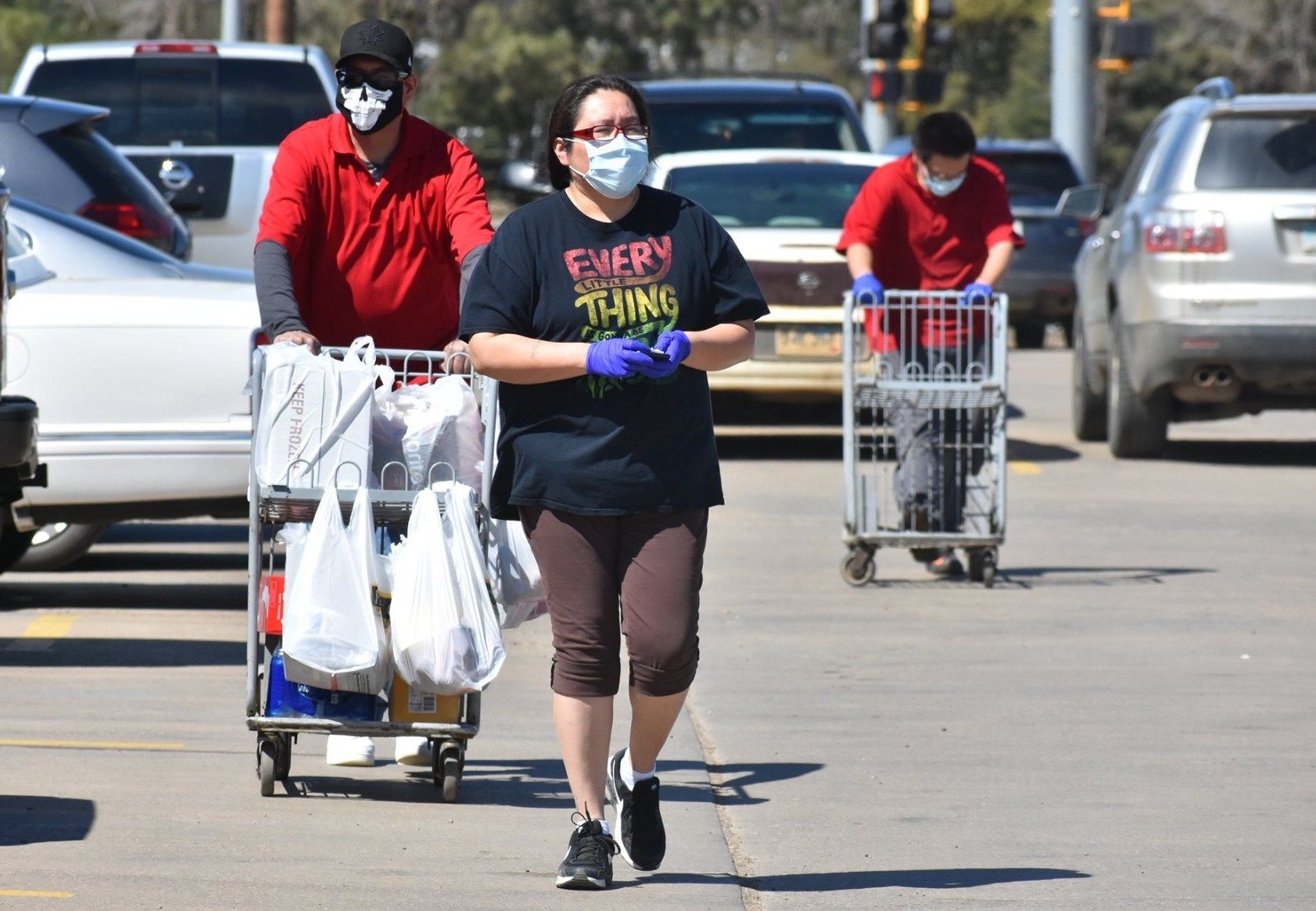
Compliance with mandatory and voluntary public-health efforts has been strong on the reservation, as many residents realize the great risk the virus poses to the population, and understand the limited ability of the tribal health-care system to react to a major outbreak.
“That makes it more dangerous for us, and there’s a mutual sense of safety as a result,” said Lt. Joseph Brings Plenty of the tribal police department. “If they’re willing to think about their neighbors, and their neighbors’ children, that this could potentially affect all of us, they tend to think about it differently.”
The tribe’s efforts to prevent the spread of the virus, prepare for a possible outbreak and protect the safety of residents of the reservation — both tribal and non-tribal members — began early in the pandemic and are continuing with vigor in a response that could serve as a model not only for other American Indian tribes but also for non-tribal communities across the country.
“If the rest of the world had been taking some of these actions, we wouldn’t have to,” said Remi Bald Eagle, the intergovernmental affairs coordinator for the tribe. “They are common-sense, proactive measures in regard to what’s happening on the reservation. All of these actions are being taken because of inaction around us.”
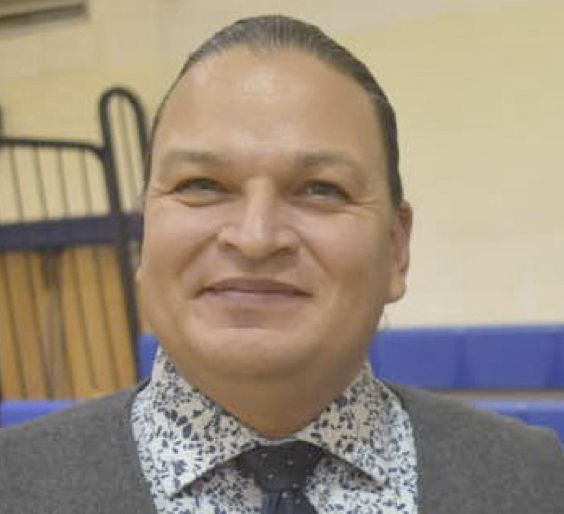
"I would rather, when this is all over, be in court or be criticized for overreacting or doing too much than I would to live the rest of my life knowing somebody was hurt or somebody passed away unnecessarily." -- Remi Bald Eagle, Cheyenne River Sioux Tribe
‘We were on our own’
When word of a deadly virus began to circulate in February, tribal leaders gathered in Eagle Butte to examine their emergency-response plans and discovered that none dealt specifically with a pandemic.
The tribe began to look around the state and the world to see what methods were working to stop the spread of the virus and treat the infected.
Officials also did an inventory of the tribe’s preparedness to handle a pandemic if it spread onto the reservation. They ran models that showed as many as 6,000 residents could get sick and 1,000 might need hospitalization, Bald Eagle said.
They quickly realized they were not prepared on any front. The hospital in Eagle Butte had eight beds, six respirators and no intensive-care capacity. The nearest ICU hospitals were about 170 miles away in Rapid City or Bismarck, N.D. The tribe lacked mechanisms to quickly provide food, water or propane to residents in need and had almost no protective equipment for residents or essential employees.
The tribe reached out to the state of South Dakota and federal agencies, requesting help in planning but also for acquisition of medical supplies and personal protective equipment, Bald Eagle said.
“We started reaching out and asking for help, and we received no responses or flat-out denials or the runaround on everything. What scared us is that no one offered any help,” he said.
Tribal officials, Bald Eagle said, quickly realized that they would have to take aggressive steps on their own to prepare for widespread infection and the aftermath on a remote reservation where thousands of residents are poor, live in close quarters, have few transportation options and limited access to health care. Ziebach County, wholly contained within the reservation, had 43.9% of residents living below the federal poverty level in 2019, according to the U.S. Census.
“It became increasingly obvious at that point that we were on our own,” Bald Eagle said. “The question then became, what can we do to prepare for this, to best take care of our people?”
The effort that has taken place in the two months since then has involved almost every entity in local and tribal government, numerous elements of the health-care community, private businesses and a strong base of volunteers, Bald Eagle said. In a way, the tribe has benefited from its status as a sovereign nation in that significant prevention actions do not need approval from other governments.
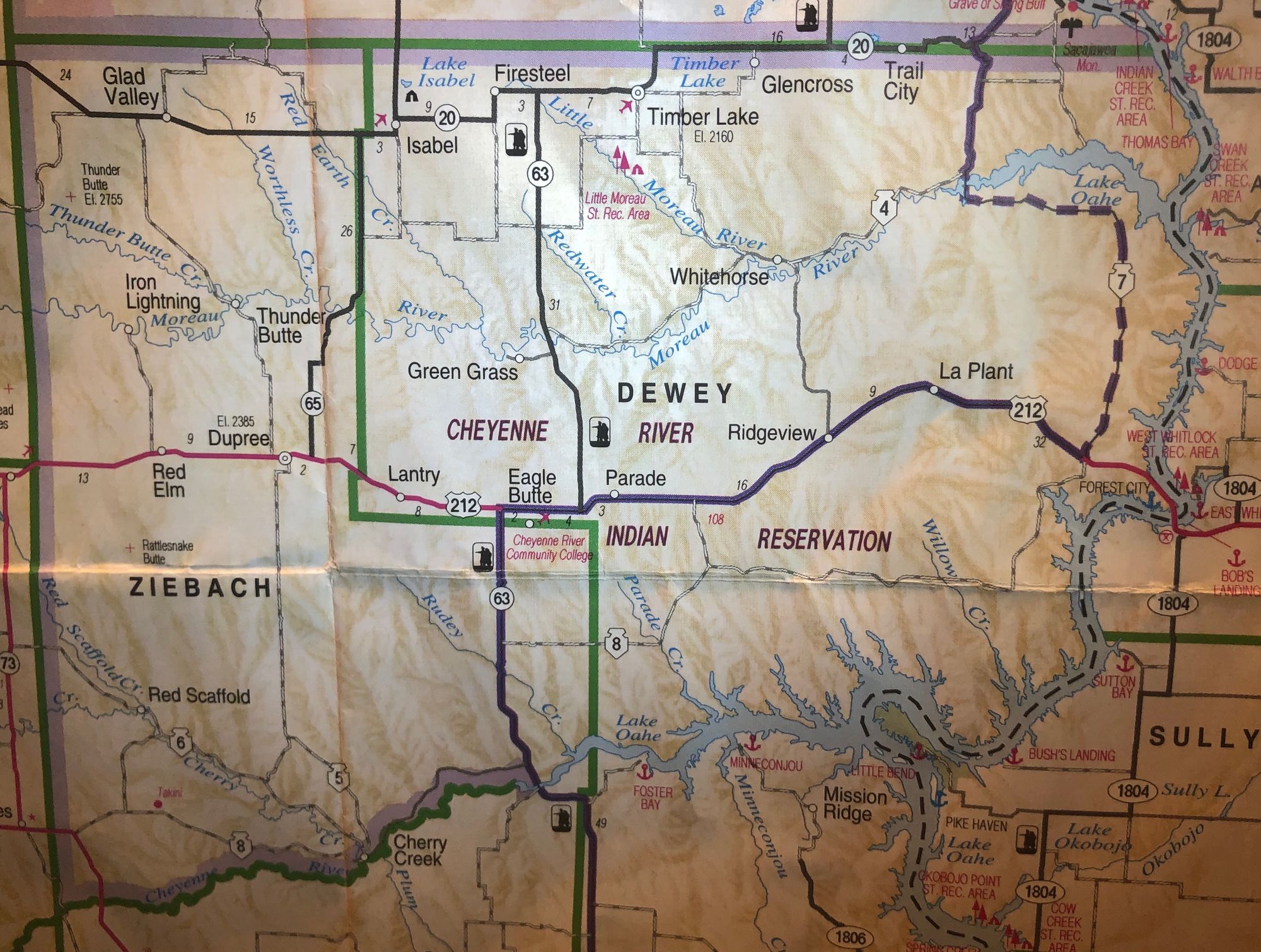
“The checkpoints are just the tentacles, or the edges, of a larger system that we have implemented to protect the population on the reservation as a whole, both tribal members and non-members,” he said.
The tribe has taken several steps to protect its elderly residents, who are cherished in Lakota culture but also are at higher risk of death from the virus.
The tribe locked down its nursing home and placed all residents under strict quarantine, Bald Eagle said.
Officials also made a roster of all elderly residents who were living on their own and created a program in which a medical professional or volunteer calls each homebound elderly resident daily to check on him or her. On a recent day in mid-May, 93 elders were reached at their homes.
“We want all our elderly to be home, and not have to be home worrying,” Bald Eagle said. “They call and ask them, ‘What do you need, grandma, what do you need, grandpa? If they say, ‘I need food,’ then we’re on it and delivering food. If they need electricity, we take care of the electricity, and if they need propane, we get that to them.”
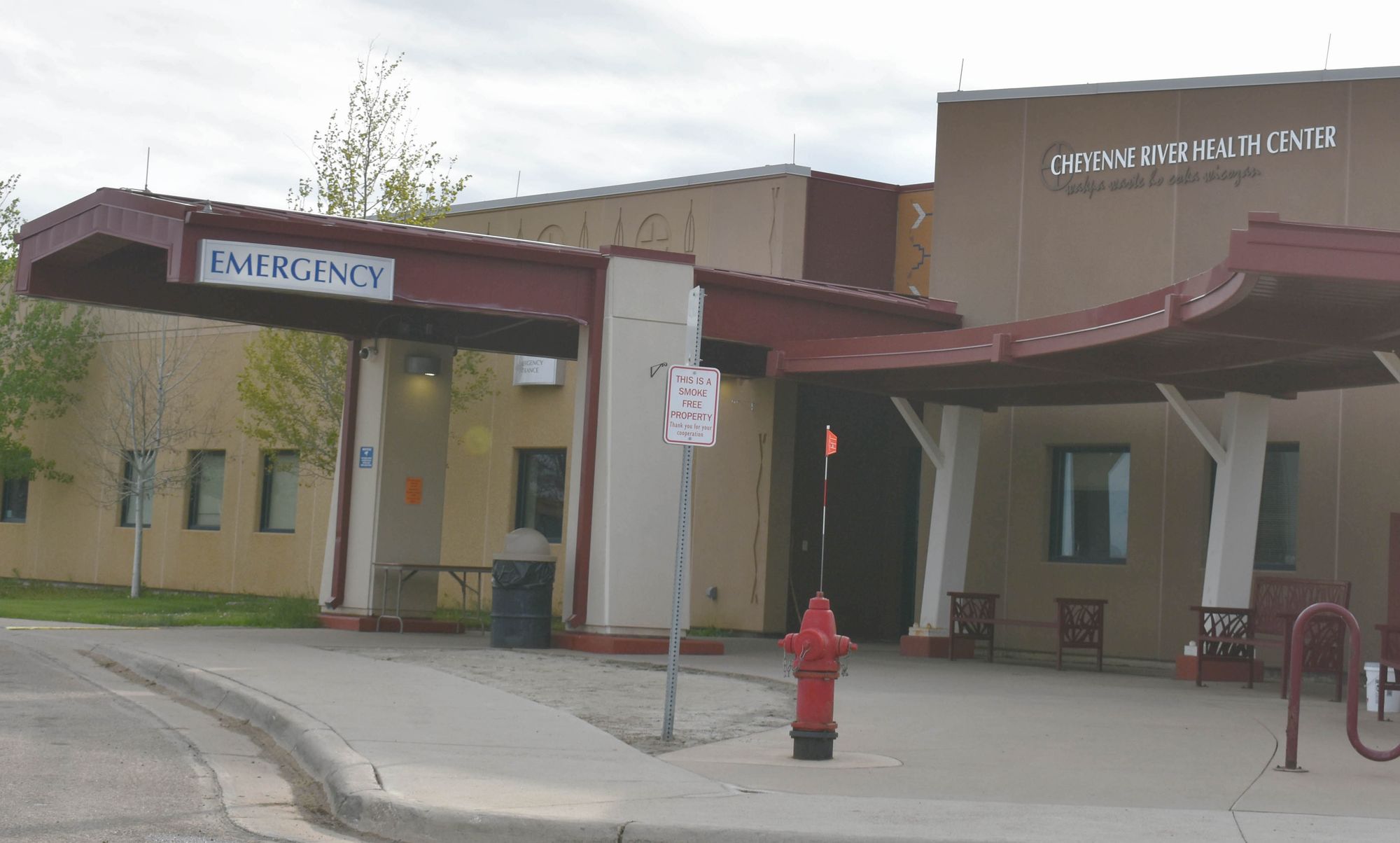
Health care seen as priority
Early on in the pandemic, the tribe set up a 24/7 medical hotline to answer health questions about the virus and a separate behavioral-health hotline to help people suffering emotionally and to direct them to resources they might need.
Danette Serr, director of nursing for Tribal Health Services, said the tribe was not initially prepared to handle a COVID-19 outbreak if it did occur.
The tribal medical staff has only two doctors, one physician’s assistant, one nurse practitioner and 11 nurses. The Cheyenne River Health Center has only eight beds and until recently, the tribe had only 18 tests for COVID-19.
In the past couple months, the tribe has prepared auxiliary spaces within government buildings that can house up to 34 patients, and has distributed masks and gloves to all medical employees.
On Monday, May 18, Serr was leading a new effort to implement testing for COVID-19 among all essential employees on the reservation, starting with about 100 members of the law enforcement and public safety departments. About 200 more nasal-swab tests will be done on other tribal government employees through the week, she said.
“The best way to fight this is through prevention because nobody really knows much about it,” Serr said.
Daily briefings are held to discuss prevention plans and next steps among a host of various medical and government agencies, Serr said. So far, she has seen strong cooperation within the tribe and with non-tribal agencies.
“I think we’re working as a strong unified front; everybody is helping everybody and every program is helping every other program,” she said.
Provost said the health service received several thousand face masks from the Federal Emergency Management Agency on May 14 and was distributing them to residents across the reservation.
The tribe built a temporary shelter where people can safely isolate if they are concerned they may have been in contact with the virus, and for those who have entered the reservation from outside and must be monitored before having contact with others on the reservation, Bald Eagle said.
The tribe created a steam-cleaning and disinfection team that has cleaned government offices, essential businesses and anywhere else people may come together.
Before the pandemic, Serr and her team worked on fighting seasonal illnesses like colds and the flu and chronic conditions affecting Native Americans. Last year, the team successfully fought a surprising outbreak of HIV on the reservation.
Serr said they continue to prepare for the worst as case numbers begin to climb in the West River region after big spikes earlier in the Sioux Falls area and parts of northeastern South Dakota.
“Unfortunately, it’s going to hit western South Dakota since they opened back up and with summer coming,” she said.
The potential for further outbreak will require the tribe to remain vigilant in its efforts to prevent the arrival of the virus on the reservation.
“As long as we don’t get a surge of 20-plus people at one time, I feel very comfortable where we are in our preparations,” Serr said. “And the longer we can keep people home and safe, the more we can hopefully lessen the numbers.”
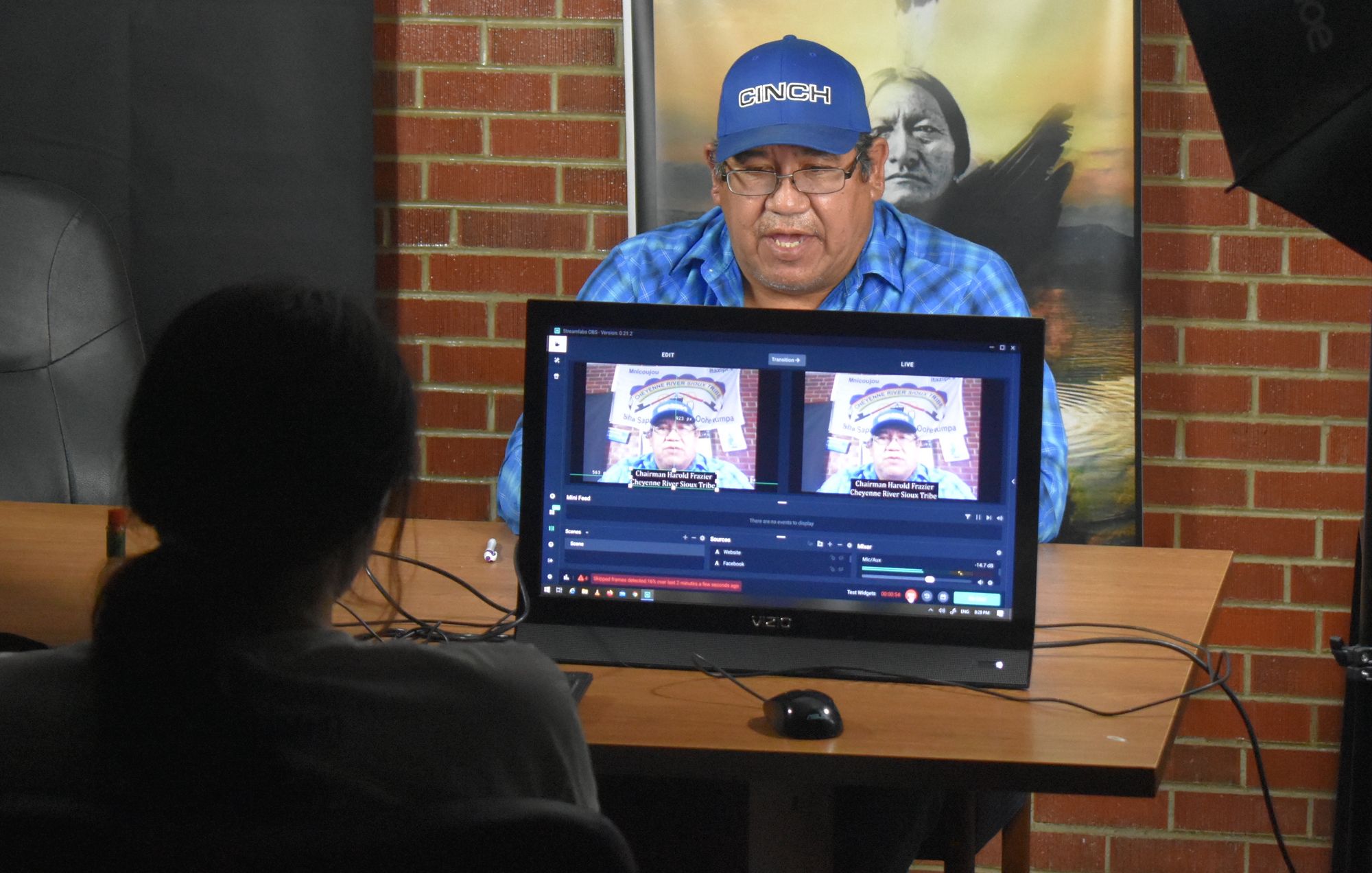
Prepared for potential food shortage
The tribe also created a food program that not only collects and stores food and supplies but also delivers them to individual households.
“If we’re asking someone to stay home, we have to have the ability to take care of them at home, and we don’t want them to pack into a car to go somewhere to pick up food,” Bald Eagle said. “We also wanted to avoid those long lines of cars congregating where people can pick up food.”
The program also led to the storage of thousands of pounds of frozen meat and other foods.
Local ranchers, both tribal and non-tribal, donated three dozen head of cows for processing, and the tribe slaughtered elk and buffalo from its managed herds to provide meat for those in need and for freezing. Pork producers in the region, struggling to offload hogs during processing-plant shutdowns, have sold the tribe numerous pigs at reduced prices.
“If the pandemic got really bad, we’d be without food because we’re in a remote area,” Bald Eagle said. “But today, we’ve got thousands and thousands of pounds or protein stored away in our pantry freezers.”
School coolers and freezers have been tapped to hold foods that may be needed later if the pandemic worsens. Schools, though closed, have also continued to serve lunches to students in need.
“I’m really proud of everyone because we can sustain ourselves for quite a while right now should we be cut off from food,” Bald Eagle said. “And when this is over with, we’ll have a lot of meat we can give to our people free of charge.”
The tribe closed local schools and instituted remote teaching and learning in March. Traditional attendance boundaries between tribal and non-tribal schools were eliminated to enhance connections. A strict community curfew was put in place, allowing no one to be outside after 8 p.m. until 6 a.m.
The tribe placed restrictions on essential stores, including the only grocery store and two dollar-stores — with a rule that no child under 16 be allowed in “due to the difficulty they have in social distancing,” Bald Eagle said. All patrons and employees must wear protective equipment, including masks.
The tribe implemented elderly-only shopping hours of 8 a.m. to 10 a.m. and a rule that only one member of any family can shop at a time.
The tribe has shifted existing funding from shuttered programs such as child care or other in-person government programs to pay for new efforts to fight the virus. The tribe is also expected to receive a $20 million payment from the CARES Act bailout program passed recently by Congress, Bald Eagle said.
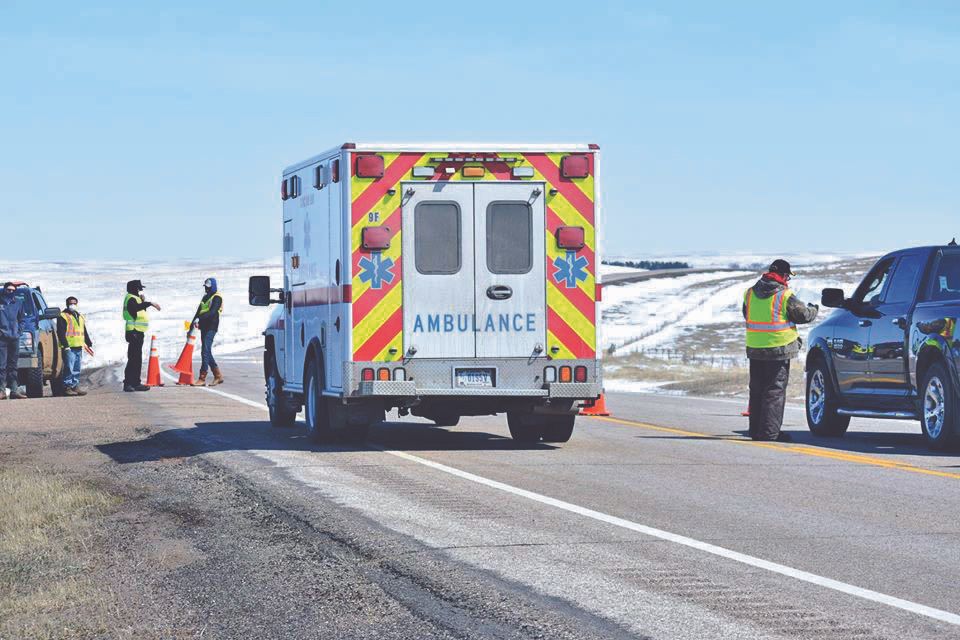
Checkpoints seen as critical safety measure
In its most visible and now controversial move, the tribe installed checkpoint teams at nine locations on improved roads heading into the reservation, including on U.S. 212 and on state roads 20, 34, 63 and 65.
At each site, vehicles heading onto or off of the reservation are stopped and drivers and passengers are asked a series of medical questions, including about their recent human contacts and their destinations. All the information is then tracked, and if questions arise, Bald Eagle or another top tribal or medical official is contacted to confer about what to do next.
Tribal members or those who are simply passing through the reservation without stopping are typically allowed to drive on, Bald Eagle said. Those without a clear destination, or who may draw the suspicion of checkpoint officers, can be turned away. In a recent week, Bald Eagle said that thousands of vehicles had approached the checkpoints and that only 13 had been turned away.
“The rationale is to have an early warning system, and to track the movement of transportation on and around the reservation,” he said.
Tribal Chairman Harold Frazier has made clear that he believes the checkpoints are fully within the tribe’s sovereign rights and that they will remain until the pandemic passes.
Bald Eagle said the tribe has continually improved its processes at the checkpoints and has not heard any serious complaints about the program. He said Gov. Noem has claimed that the state has received numerous complaints, including reports that emergency vehicles, delivery trucks and local ranchers were turned away at the checkpoints. But he said no one from the governor’s office has shared the specific number or nature of the complaints with the tribe.
“They don’t turn those complaints over to us, so we don’t have a way to modify our behavior to alleviate the complaints,” he said, adding that no emergency vehicle has been prevented from travel and that in fact all other vehicles at checkpoints are stopped while any emergency vehicle is allowed to pass immediately through.
Maggie Seidel, a spokesperson for Gov. Noem, did not provide specifics to News Watch about the complaints received by the state about the checkpoints. “Lots of people — in and out of state government. Travelers. Business owners who aren’t getting any traffic. Gas station owners who [can’t] get fuel to their service stations. The list is long,” Seidel wrote about the complaints.
Bald Eagle said a fuel truck was turned away early on during the checkpoint process because the driver refused to answer health questions. He also said anyone with a complaint at a checkpoint is now given a form to fill out and return with details about their grievance, and the tribe is using the forms and other reports from the field to be sensitive to traveler’s needs.
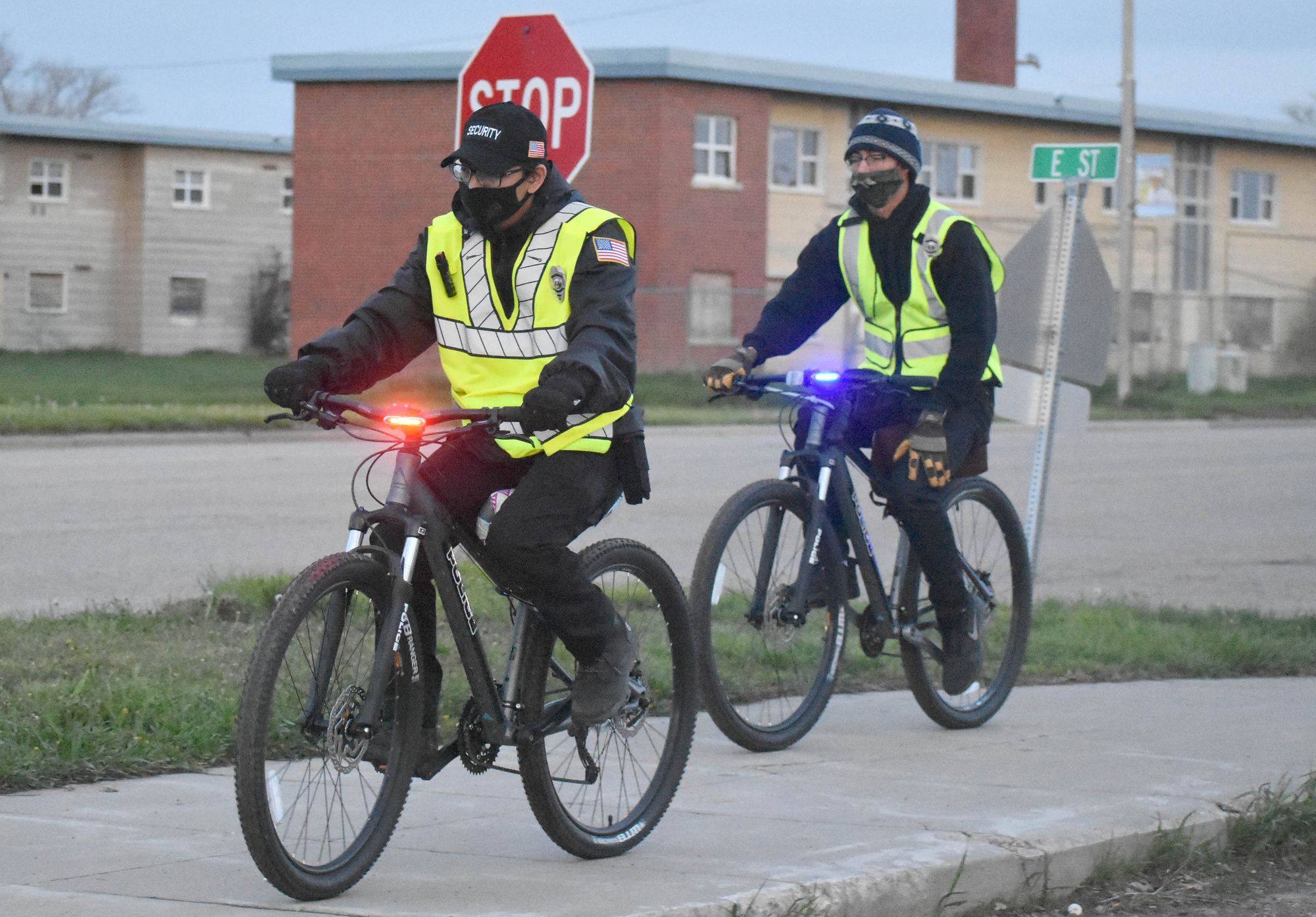
The roadway checkpoints are a small part of a wide-ranging COVID-19 response by the tribal public-safety department, said Lt. Brings Plenty.
The tribal agency has hired more than 30 new officers to aid in enforcing laws but also in upholding safety measures related to the pandemic, Brings Plenty said.
Officers have been dispatched to several towns on the reservation to enforce the nightly 8 p.m. to 6 a.m. curfew. Recently, officers began patrolling areas on bicycles equipped with police markings and lights. Curfew violators have been few in number, and most are issued a warning though they can be cited and fined, Brings Plenty said.
Tribal officers are also trying to protect the safety of residents while carrying out essential activities, such as shopping. Officers have been stationed at the grocery store, for example, to enforce rules about how many people can be in the store at one time, along with social-distancing requirements while waiting in lines. Officers also provide personal protective equipment to shoppers who don’t have it, Brings Plenty said.
“This pandemic is real, it’s out there, it isn’t fabricated,” he said.
For now, unless the political situation changes, Bald Eagle said he expects the checkpoints will remain in place.
“To me, success is us doing every single thing we can to save every person’s life that we can,” Bald Eagle said.
Bald Eagle said the tribe’s only known case of COVID-19 was caught due to the efficiency of the checkpoint system.
When a woman returned to the reservation after spending time in Pierre in March, she was asked questions about potential exposure to the virus. The woman told checkpoint officers she had been at a motel in Pierre where an employee was rumored to have been infected, so the woman was immediately placed in self-isolation and monitored for symptoms.
When she displayed symptoms, she was placed in a medical quarantine and eventually transferred to Monument Health in Rapid City, where she received treatment and has recovered. While she was hospitalized, the tribe did two things, Bald Eagle said: The tribe steam-cleaned and disinfected the woman’s home, and officials alerted the state to the potential hot-spot at the motel in Pierre.
Bald Eagle said the tribe has learned numerous lessons during the pandemic, including the need for a reservation business and industry group to bring forth economic concerns and ideas, and discovering ways the tribe can work independently and also cooperatively to get things done.
He has no regrets about the tribe’s position of continuing the checkpoints or imposing restrictions on the lives of residents to protect them from the virus.
“I would rather, when this is all over, be in court or be criticized for overreacting or doing too much than I would to live the rest of my life knowing somebody was hurt or somebody passed away unnecessarily,” he said.
